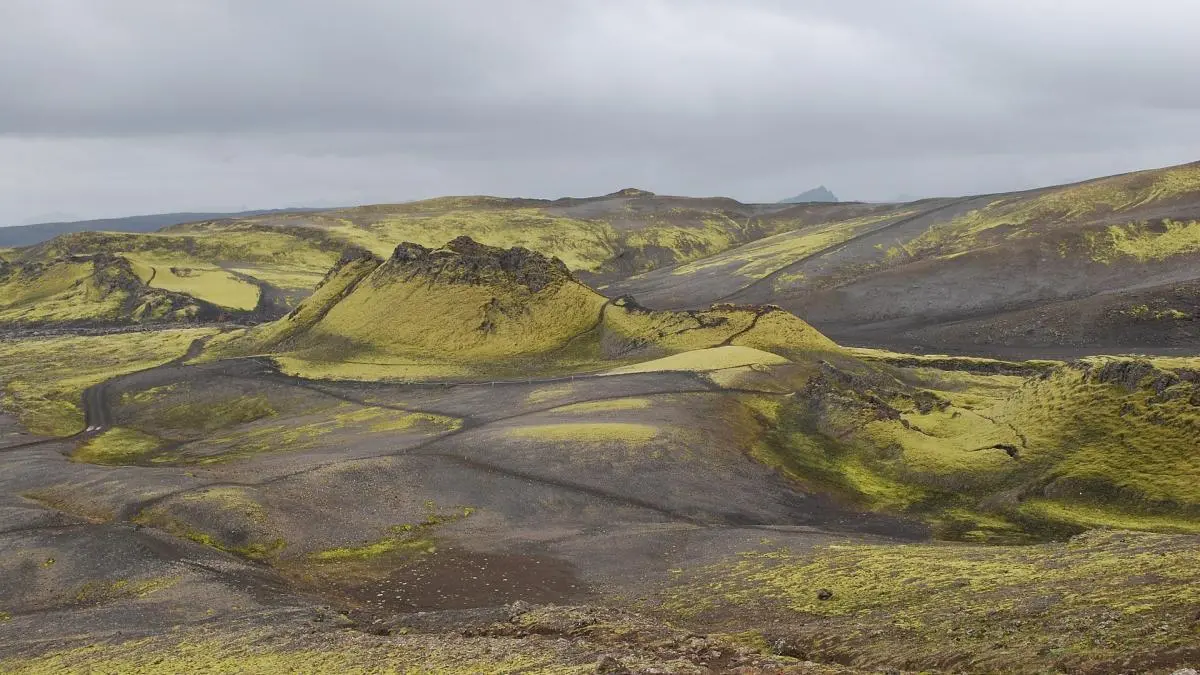Most people who visit Iceland have a vision of a progressive Nordic country with friendly people, stunning nature and rich cultural history. Of course, that is really nice and these good people are right. Iceland is really beautiful and even if we grumble sometimes, Iceland is a really nice place to live. The dark side of Icelandic history is, however, rarely revealed although sometimes glimpses of it emerge from time to time. This article is one of the times I explore the dark side of Icelandic history. Get ready for diseases, eruptions, famine, and lots and lots of death. This time we cover the Laki eruption of 1783 and the ensuing famine.
Subscribe to my newsletter for exclusive discount codes that will give you savings on 150 Iceland tours and travel services.
Subscribe to the Stuck in Iceland newsletterReceive exclusive promo codes for tours, car rental, camper van rental, and outdoor clothing rental. Get occasional updates about new content. I will never give your data to a third party without consent.
Thank you
Jon Heidar, Editor of Stuck in Iceland Travel Magazine

The dark side of Icelandic history
It could be said that I have already written the first post in the series. I covered the dark side of Thingvellir a few years. It was about how this UNESCO world heritage site was a booming party place every summer during the ‘Viking’ era. Then it descended into a place of judgment and death, especially for young women who were drowned on the spot if found guilty of ‘immoral conduct.’ They were sentenced to die by old men whose peers were often responsible for the misery of the women being judged. As an old story as it is reprehensible.
Iceland devastated by Laki eruption
Anyway, I was inspired to write this post after having listened to an episode of NPR Throughline podcast. It dealt with the eruption of Laki which completely devastated Iceland in 1783 and its terrible consequences. The podcast was excellent. However, the fact-checker probably didn’t realize how rural Iceland was during this time. There were hardly any villages in Iceland during this time but this is obviously a minor detail
God is angry at you and this Laki eruption is proof
The podcast highlighted the superstitions and strict form of protestant Christianity which dominated Icelandic culture at the time. This probably made everybody even more miserable than they had already had to be. Thinking you are being targeted by God’s wrath for your sins while your children starve to death is probably not a nice feeling.
The worst part of the eruption was not the extreme amount of lava that flowed from the many craters in the Laki faultline and destroyed 13 farms outright. 29 neighboring farms were destroyed due to a torrent of pumice and sand with a big dose of flooding added in for good measure.
Poison on top of poison
For eight months, from June 1783 to February 1784 the Laki fissure in the southeast of Iceland pumped out a whopping 2 billion tons or 14 KM3 of basalt lava. But the worst thing was the cloud of eight million tons of highly poisonous hydrogen fluoride and 120 million tons of sulfur dioxide. It was this terrible toxic cloud that was so intense and poisonous that it obscured the sun and subjected people and livestock all over the country to disease and cold.
The eruption happened at the worst time possible. The preceding winters had been brutally cold so there were no supplies of neither food or hay. The only thing in abundance was starvation, disease, and death. So when mist blocks out the sun and causes a terribly cold winter, the consequences are just heart rendering for the Icelandic people.
Horrible fate
Consider this. The winter of 1783-1784 was extremely cold. Ice blocked all fishing in the sea in northern Iceland. People started to die from starvation in December and those who could travel tried to make their ways to the fishing ports in the south and west of Iceland. Many refugees didn’t make it. Many of those who did, were so sick and weak from starvation they died just by finally getting some fish to eat.
Now we have to build a new house while ‘fasting’
To add insult to injury, earthquakes destroyed 400 farms in the South of Iceland in the summer of 1784. Just imagine people trying to cope with starvation while building shelters for winter. The summer of 1784 yielded little hay for livestock so people died from starvation again in the following winter.
No dancing, please. We are not in the mood
The result of the Mist-hardship was that half of the livestock perished. One-fifth of the people in Iceland died. One historian maintains that Icelanders were so demoralized after these events that they didn’t dance for a century.
Laki eruption was felt around the world
The effects on the weather were not only disastrous in Iceland. They were also felt around the world with poor harvest and cold winters. There is speculation that this was one of the causes of the French Revolution. In Iceland, there is no ambiguity about the effects of the poisonous haze. The following winters and summers were disastrously cold. The rather modest name for this disaster in Iceland is Móðuharðindi or the Mist-Hardship. That sounds like somebody would describe half-jokingly being lost in a fog with nothing but warm Pepsi-Max for nourishment and a Justin Bieber CD for entertainment. Not like an entire nation trapped in a hellish semi-nuclear winter for years.
Let’s move those starving Icelanders to Iceland
The Danish authorities despaired. They had tried in their paternalistic way to do their best to improve the circumstances of the Icelandic people. Their reaction to the mist-hardships was to study if and how the Icelandic population could be evacuated to Denmark. After all, it could be an excellent source of labor for farms and factories at the start of the industrial age. But the cost and logistical challenges of transporting 40.00 bedraggled Icelanders to Denmark proved overwhelming in the 18. Century. So here we still are, the descendants of the people who somehow were able to survive the horror of the Mist Hardships.
Laki is still an active volcano
And Laki, well, it is still active. And it may go off at any time. I have actually never been up there but it is definitely on my bucket list for 2020.




